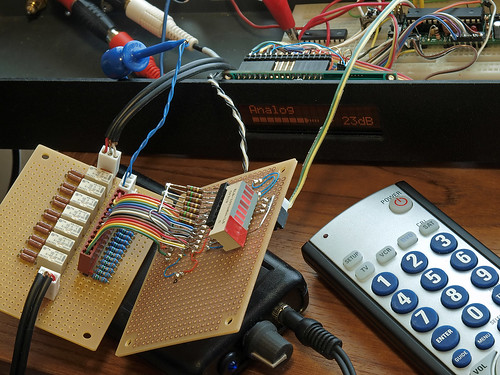zkool448
100+ Head-Fier
- Joined
- Jan 5, 2009
- Posts
- 472
- Likes
- 0
Thanks flecom.
I'm fortunate enough to meet a fellow head-fi'er today who lives in the same city as I do. He's got more electronics skills and enough knowledge than I could ever possibly learn in my lifetime

Anyway he's actually working on a balanced version of the Bijou, ironically the same amp I'm about to build (but not balanced) once my parts arrive from GlassJar. We discussed the topic of VU meters and coincidentally he had managed to source several VU meter units from overseas that he plans on putting on his his amp projectss, including ones that almost look like the McIntosh's. Long story short, he's going to start working on the design and get some working vu meter installed on our builds.
Here's a draft of the Bijou case I'm currently designing, and I also included below a photo of the actual dual VU meter that he graciously loaned me today to get its exact dimensions from.
LED VU meter:

Analog VU Meter:

The VU meter:

We didn't really get into the nitty-gritty deatails too much but it sounds very promising with a very high probability that we can get this thing going (finger crossed)!

I'm fortunate enough to meet a fellow head-fi'er today who lives in the same city as I do. He's got more electronics skills and enough knowledge than I could ever possibly learn in my lifetime

Anyway he's actually working on a balanced version of the Bijou, ironically the same amp I'm about to build (but not balanced) once my parts arrive from GlassJar. We discussed the topic of VU meters and coincidentally he had managed to source several VU meter units from overseas that he plans on putting on his his amp projectss, including ones that almost look like the McIntosh's. Long story short, he's going to start working on the design and get some working vu meter installed on our builds.
Here's a draft of the Bijou case I'm currently designing, and I also included below a photo of the actual dual VU meter that he graciously loaned me today to get its exact dimensions from.
LED VU meter:

Analog VU Meter:

The VU meter:

We didn't really get into the nitty-gritty deatails too much but it sounds very promising with a very high probability that we can get this thing going (finger crossed)!






